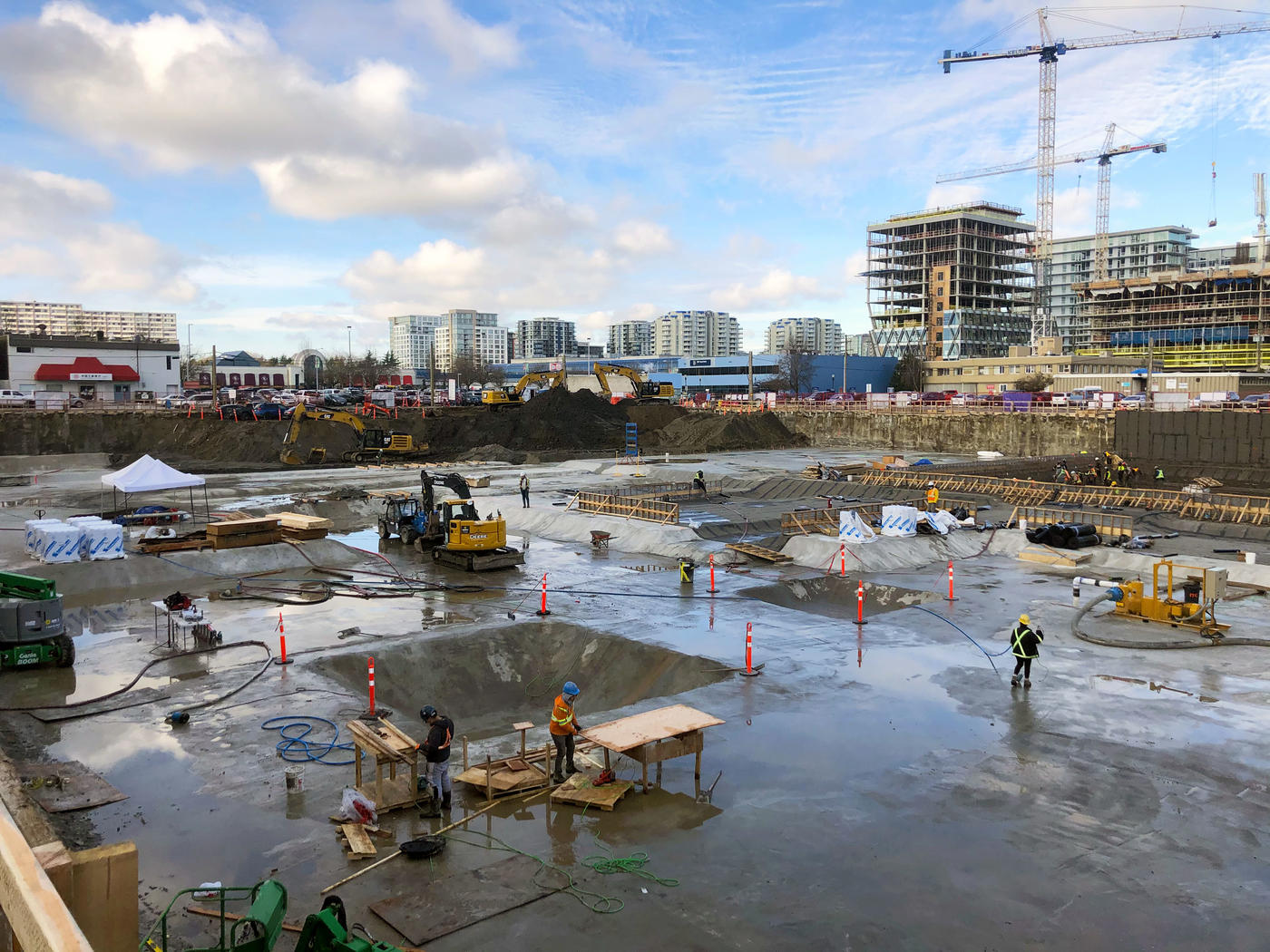The Creek is a luxury condominium tower and public park development located within the historic Southeast False Creek flats adjacent to the False Creek inlet on the outskirts of downtown Vancouver. Five buildings make up the complex, with Building 5, also known as Tesoro, being the largest.

The project
Tesoro is a 19-story residential tower with three levels of below-grade parking. The site was initially used as an industrial area and created using non-engineered fill in the late 1800s. Soft to firm glacial sands and silts are beneath the fill, and soft sedimentary bedrock was encountered around 36 ft (11 m). Groundwater was present 7.2 ft (2.2 m) below the existing grade and varied with tidal fluctuations. Due to the ground conditions and high groundwater table, the excavation of the below-grade structures required a shoring program to provide a permanent cut-off wall, facilitating construction in the dry.
The challenge
This project presented several challenges:
- Minimal disturbance to surrounding residential neighborhoods was required.
- The presence of construction debris within the non-engineered fill, including concrete and asphalt, made other shoring methods, such as driven sheet piles, unfeasible.
- An aggressive construction schedule was required to meet the planned opening date of the development.
The solution
Keller possessed the fleet and personnel required to install secant piles ahead of schedule to meet the aggressive schedule. The geotechnical engineer recommended secant piles, which can be installed through obstructions to provide a permanent cut-off wall. Keller installed 315 secant piles 34.6 in. (880 mm) in diameter around the site’s perimeter. To minimize disturbance to adjacent neighborhoods, Keller used special-purpose low-noise generators and monitored ground vibration during construction. Piles were installed to a maximum depth of 42.6 ft (13m) and were embedded 6 ft (2m) into the bedrock. Full-length steel beams were installed to reinforce the secant piles. Following completion of the shoring work, anchors were installed by others through the piles for additional lateral support.
Efficient and streamlined operations allowed Keller to complete secant pile installation three weeks ahead of schedule.

